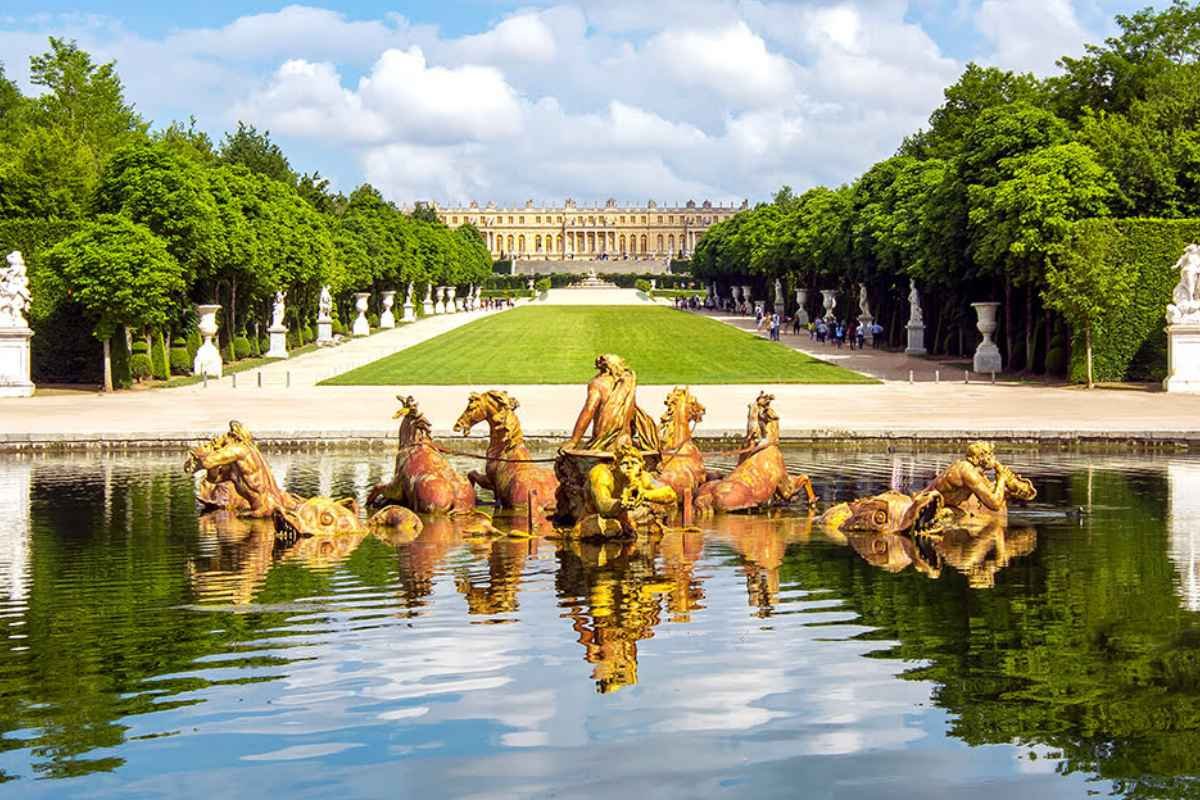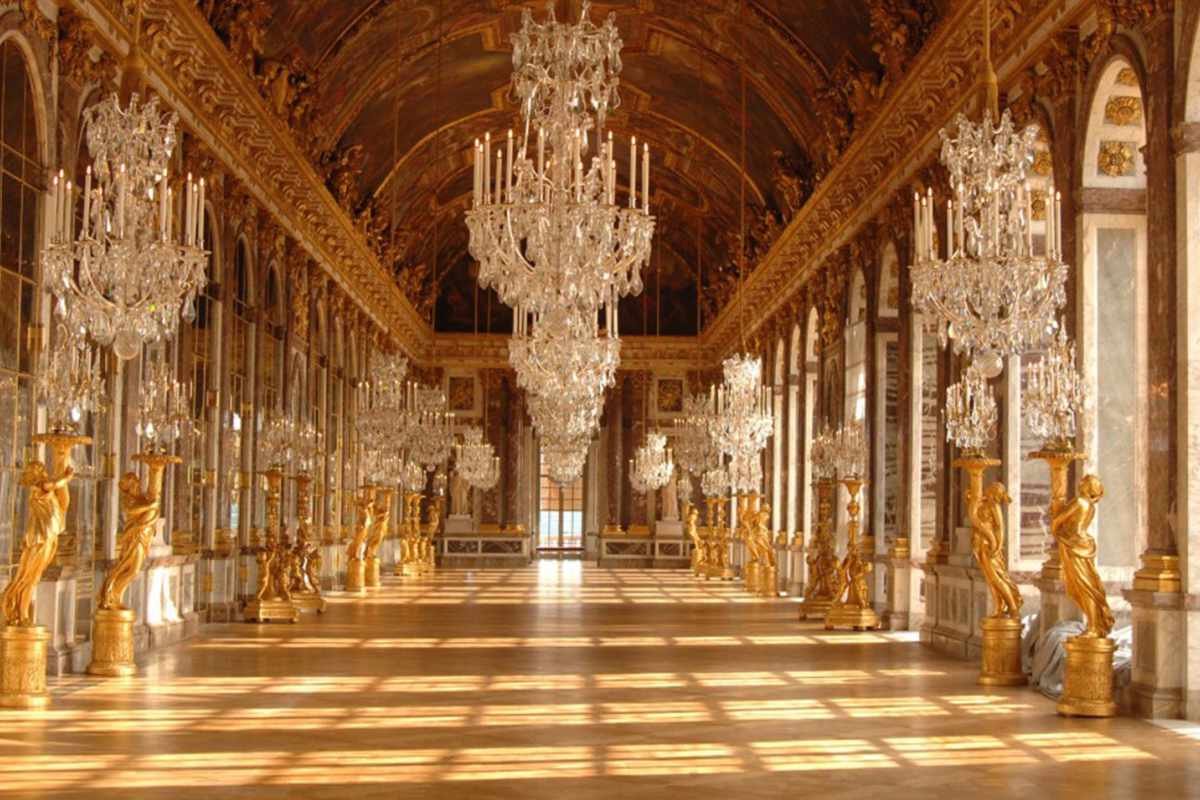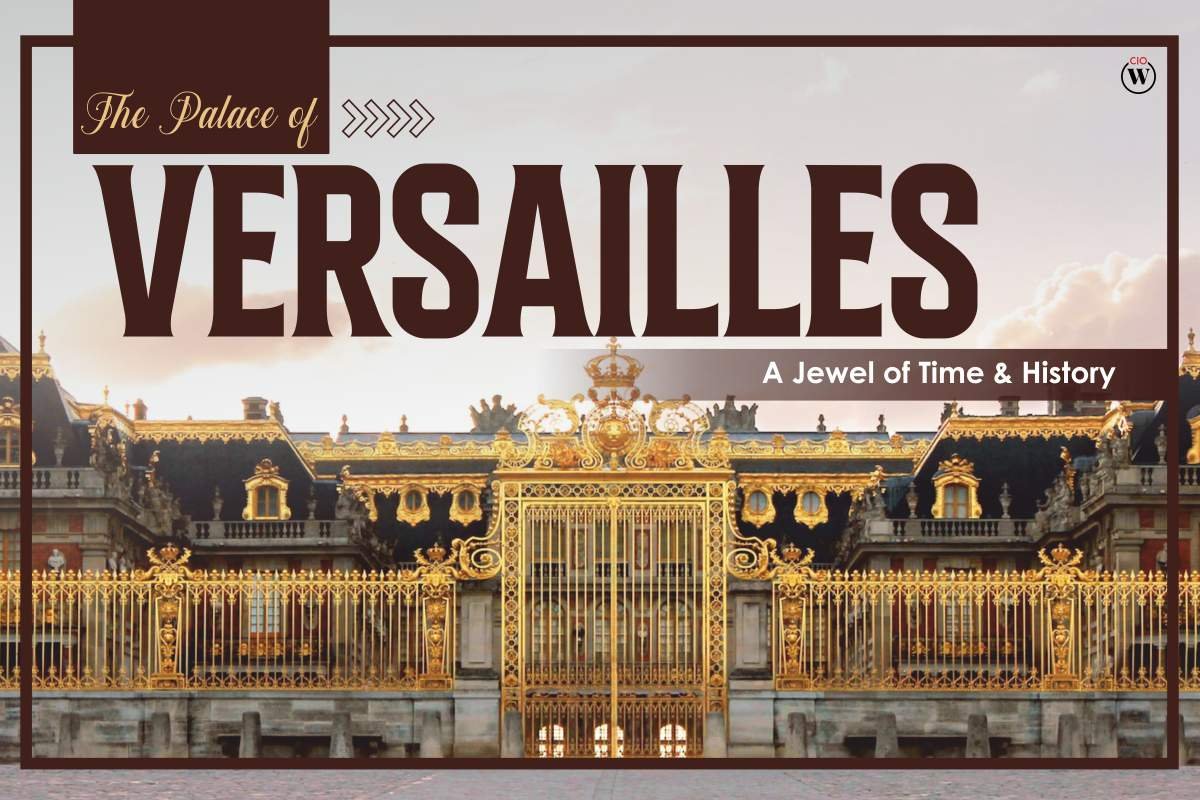As you step through the ornate golden gates of the majestic palace, you are transported back to the era of kings and kingdoms, of royals and riches. The grandeur and opulence of the architectural wonder you are standing in front of have you in awe. This is the Palace of Versailles, located in Versailles, France, and was declared a World Heritage Site by UNESCO in 1979.
Nestled amidst the sprawling gardens and shimmering fountains, the palace has captivated the world for centuries. Started as the dream of the Sun King, Louis XIV, with the time and dedication of the workers, the palace has blossomed into a symbol of absolute monarchy under his reign. Every intricate detail, every stroke of paint, and every ornate decoration was meticulously crafted to embody the extravagant dreams of the royal court. And now, it has become a global icon, a symbol of timeless elegance and artistry. Through this article, we are going to explore the magic every corner of this grand palace has along with some of its interesting facts.
History of The Palace of Versailles
The Palace of Versailles, also known as Château de Versailles in French was once a hunting lodge. King Louis XIII built the lodge in the 17th century. But his son, Louis XIV, has some other vision for the land. He wanted to create a palace that would showcase his power and grandeur. Hence, he started transforming the lodge into the magnificent palace we know of today.
Louis XIV, the Sun King, hired the best architects and artists to turn the hunting lodge into a symbol of absolute monarchy. The palace was declared an official royal residence in 1682. The palace grew and expanded over the years, with new fountains, gardens, and rooms being added. However, it was abandoned in 1715 after the death of Louis XIV.

During his reign, Versailles became not only a residence but also a center of political and cultural significance. It was here that the king held court and made important decisions. The palace became a hub of artistic expression, attracting painters, sculptors, and musicians who wanted to be a part of the Sun King’s grand vision.
In 1722, it returned to its royal status. More additions were made to the palace during the reign of Louis XV and Louis XVI. But Louis Phillipe was the one who made great changes, partly with the help of patrons in the United States. The Palace of Versailles symbolized the might and authority of the French monarchy. Its interiors, grand halls, and stunning gardens left visitors in awe. It was a place where the king could showcase his power and impress foreign dignitaries.
Over time, the palace continued to evolve and adapt under different rulers. It witnessed the ups and downs of French history, surviving revolutions and wars. Today, the Palace of Versailles has around 2,300 rooms spread over 63,154 m2 and stands as a UNESCO World Heritage Site and attracts millions of visitors from around the world who come to admire its beauty and learn about its rich history.
The Intricate Beauty of its Architecture
The exterior of the Palace of Versailles is a sight to behold. It is ornately decorated with intricately carved stonework, with sculptures and reliefs telling tales of history and mythology. Each window, each balcony, and each statue, all carefully crafted, tells a story of its own. Its architectural design is inspired by French Baroque. Let’s learn about some of the beautifully crafted rooms and places of the Palace.
- Hall of Mirrors
This gallery is a famous part of the palace, measuring 73 meters long and decorated with 357 mirrors. The ceiling of the gallery honors the Sun King’s greatness. However, back in the time of Louis XIV, it was actually a busy hallway where people hurriedly walked through, including courtesans and visitors. Sometimes, Louis XIV would welcome important guests there, like the Doge of Genoa in 1685. On such occasions, the hall was arranged to impress and entertain. The king would sit on his throne at one end, and rows of seats were set up for the public to watch.
- Sculpture Garden
The beautiful garden, created by André Le Nôtre, is like a huge outdoor museum with 221 sculptures. Most of these sculptures show the powerful gods and heroes from ancient Greek and Roman stories. You can find them scattered around the garden, along pathways like the Green Carpet, which has 12 statues, as well as in fountains and pools. One famous pool called the Dragon Pool shoots water up into the air, reaching an impressive height of 27 meters.

And if that’s not enough, the garden also has special areas called groves where you can see modern art that adds a unique and contrasting touch. These groves have been featuring modern art for the past 10 years, making the garden even more interesting to explore.
- Grand Trianon
It is known for its stunning architecture, which impresses visitors with its beauty. The building is designed in a simple and elegant style, with clean lines and symmetrical shapes. Its white marble exterior shines in the sunlight, giving it a regal and majestic appearance. The Grand Trianon has a central dome that stands tall and proud, adding to its grandeur. The large windows allow plenty of natural light to fill the rooms, creating a warm and inviting atmosphere. Surrounded by beautiful gardens and landscaped grounds, the Grand Trianon offers a peaceful retreat from the bustling palace.
- Garden of Versailles
The Gardens of Versailles are like a masterpiece, showing the French love for order and balance. They cover a huge area of land, over 800 hectares, and are carefully looked after. When you walk through the gardens, you’ll find paths with trees on both sides, guiding you through the beauty of nature. Along the way, there are fountains of different sizes, each more stunning than the last. These fountains aren’t just for water, they’re like amazing sculptures that seem to come alive as water flows through them. And in the midst of all this, there’s a grand Canal that stretches out like a huge mirror, reflecting the sky above.
There are around 372 statues, 55 water features, 600 fountains, and over 20 miles of water pipes in the Garden of Versailles. The gardens aren’t just about looking pretty; they also represent power, control, and how humans can shape nature. It’s a place where you can appreciate the orderliness and beauty of the world, all carefully designed by people. So, when you visit the Gardens of Versailles, you’re not just enjoying the scenery, you’re witnessing the incredible ability of humans to create something truly remarkable.
The Beauty of Extravagant Interiors
The interiors of the Palace of Versailles are as mesmerizing as its exteriors. One of the best to witness are King and Queen’s apartments. These were the private living quarters of the royals and were grandeur. The King’s Apartment, with its elaborate décor and stunning frescoes, speaks volumes about the monarch’s lavish lifestyle. The Queen’s Apartment, equally grand, has an air of elegance and sophistication that reflects the persona of the Queens who resided there.
Every corner of the palace is filled with lavish furnishings, along with plush seats, intricate tapestries, and ornate tables in every room. The sculptures and paintings that decorate the walls are a work of art. And the gilded moldings, chandeliers, and hand-painted ceilings are meticulously designed and crafted.
Interesting Facts About the Palace
- The Hall of Mirrors in Versailles was built in 1678 by architect Jules Hardouin Mansart and became one of the palace’s most impressive features. With 357 mirrors, it was considered a luxury item at the time. France managed to persuade Venetian mirror makers to come and create mirrors specifically for the palace, even though Venice had a monopoly on mirror production. To protect their secrets, the Venetian government closely monitored the craftsmen and threatened them with death if they tried to leave the city.
- The Hall of Mirrors in Versailles has seen many grand events over the years. It used to be filled with 20,000 candles to create a beautiful, illuminated pathway during special occasions. One of the most important moments that took place there was the signing of the Treaty of Versailles, which ended World War I and brought peace between Germany and the Allied Powers. This historic treaty was signed on June 28, 1919, exactly five years after the assassination of Archduke Franz Ferdinand, which sparked the war.

- The architect of the palace didn’t anticipate the long distance between the kitchen and the dining rooms, which posed a challenge when feeding a large number of people, sometimes exceeding 5,000. To serve the king, hundreds of servants were required, but the distance between the kitchen and his seat was so great that his meals often arrived cold. In the 18th century, Louis XV resolved this issue by constructing private kitchens in his own apartments.
- Did you know that Versailles used to have its own collection of wild animals and birds from around the world? The palace had special enclosures built by architect Louis le Vau, where different animal species were divided and adapted to their needs. This innovative approach became popular across Europe, and these types of collections eventually became zoos in the later years.
- At Versailles, King Louis XV had a fondness for hot chocolate, which soon became popular among everyone. Back then, hot chocolate was considered a luxurious and exotic choice for the royals. There were even rumors about its aphrodisiac effects, so the king would serve it to his mistresses and sometimes even made it himself—quite unusual for a king.
The Palace of Versailles is a man-made wonder with architectural brilliance. It speaks of royalty and timeless beauty. When you visit this heritage site, you are transported back to the era of royals and riches. Your imagination takes you to a realm of kings and queens and how majestic their lives must have been. So make some time and plan a trip to this beautiful world heritage site.









